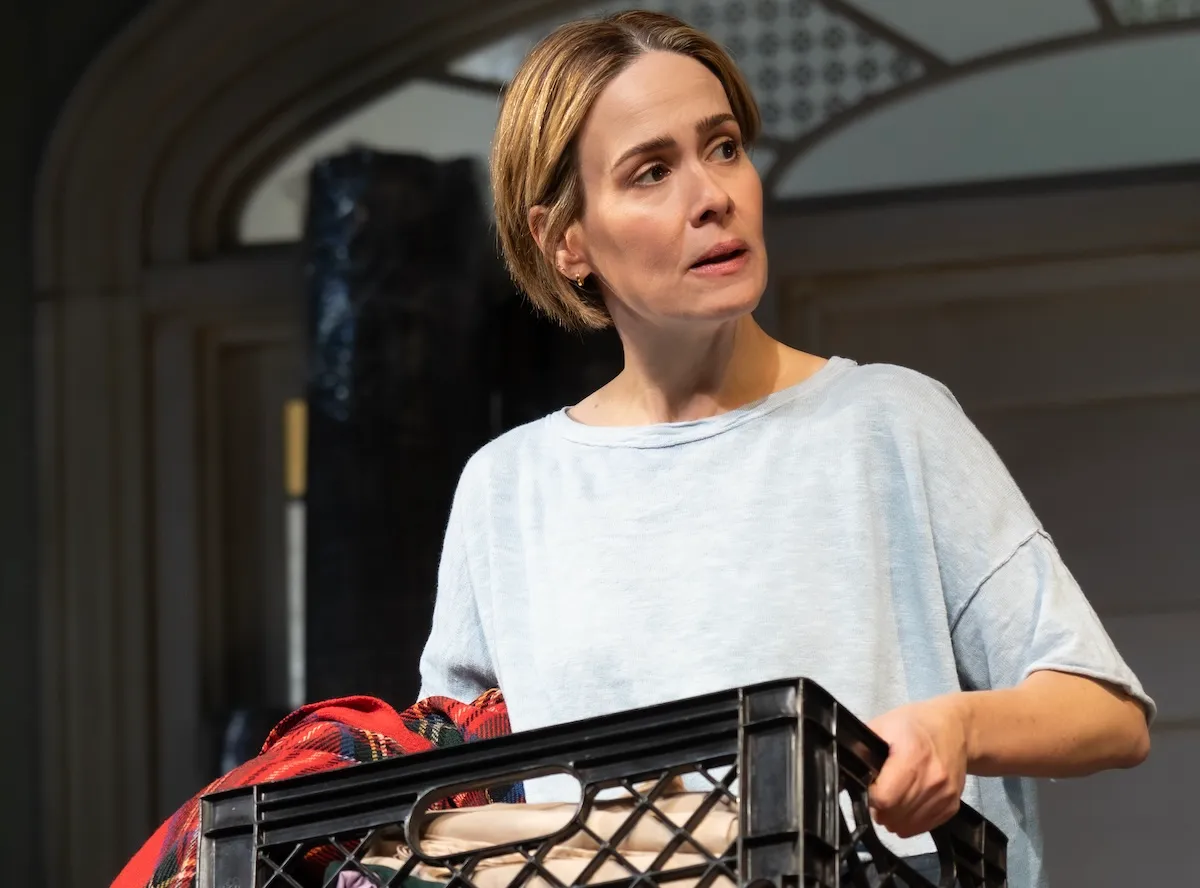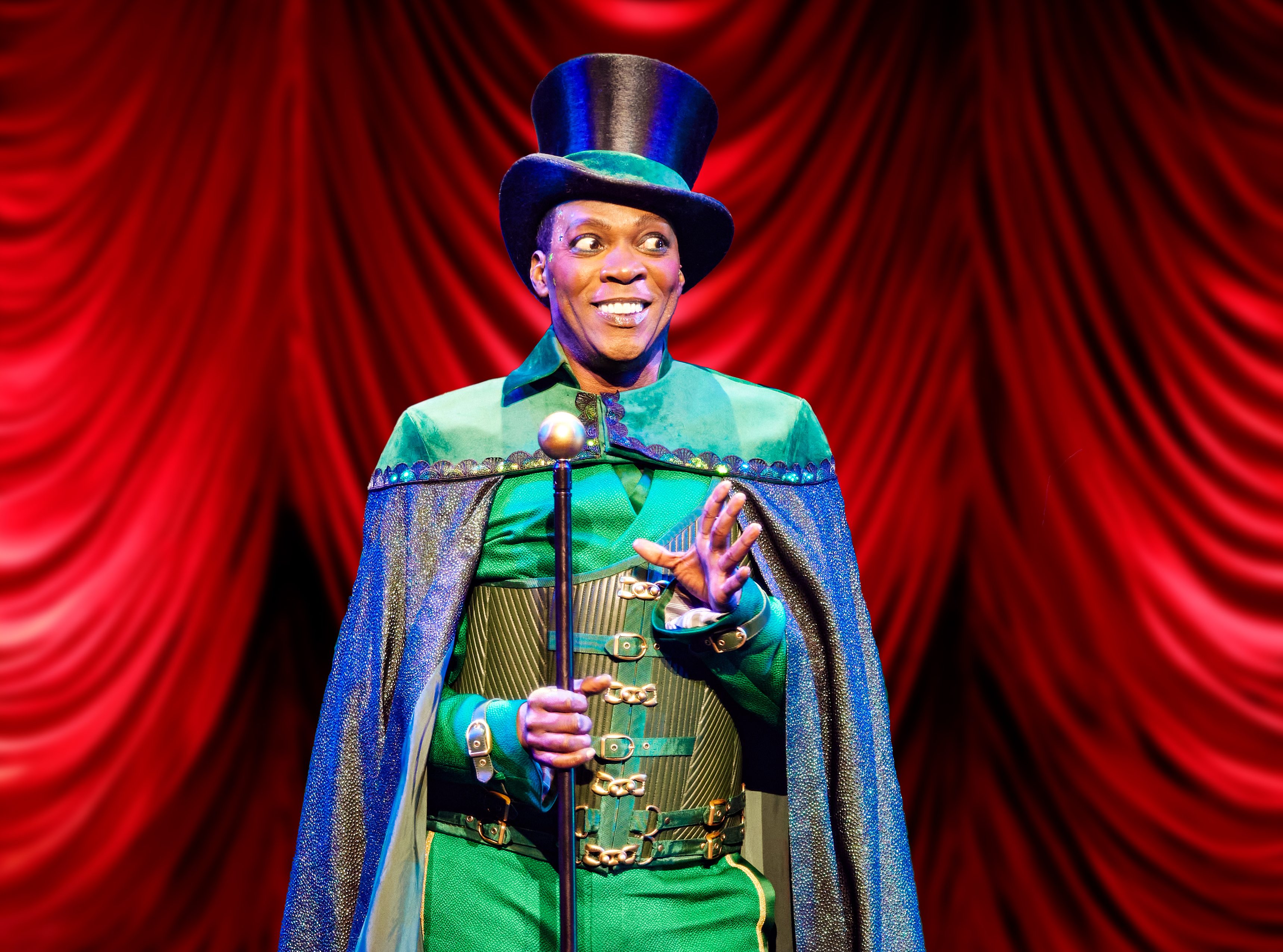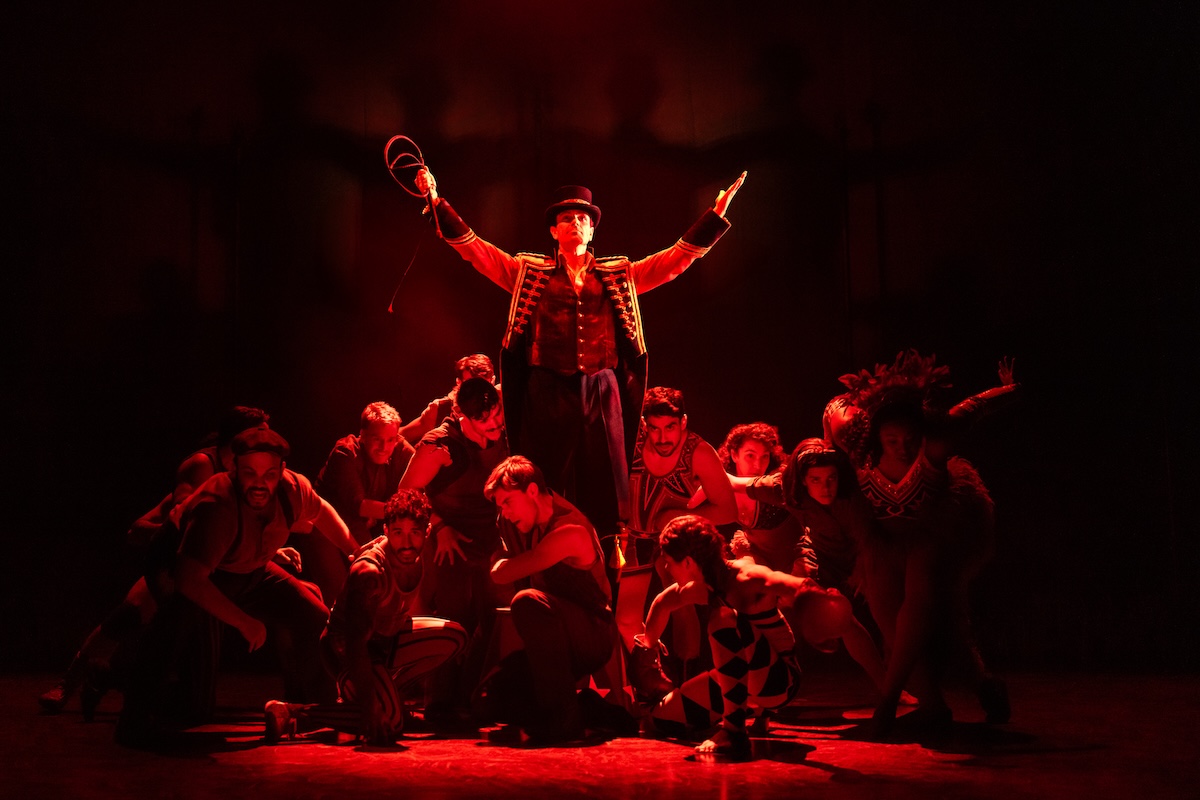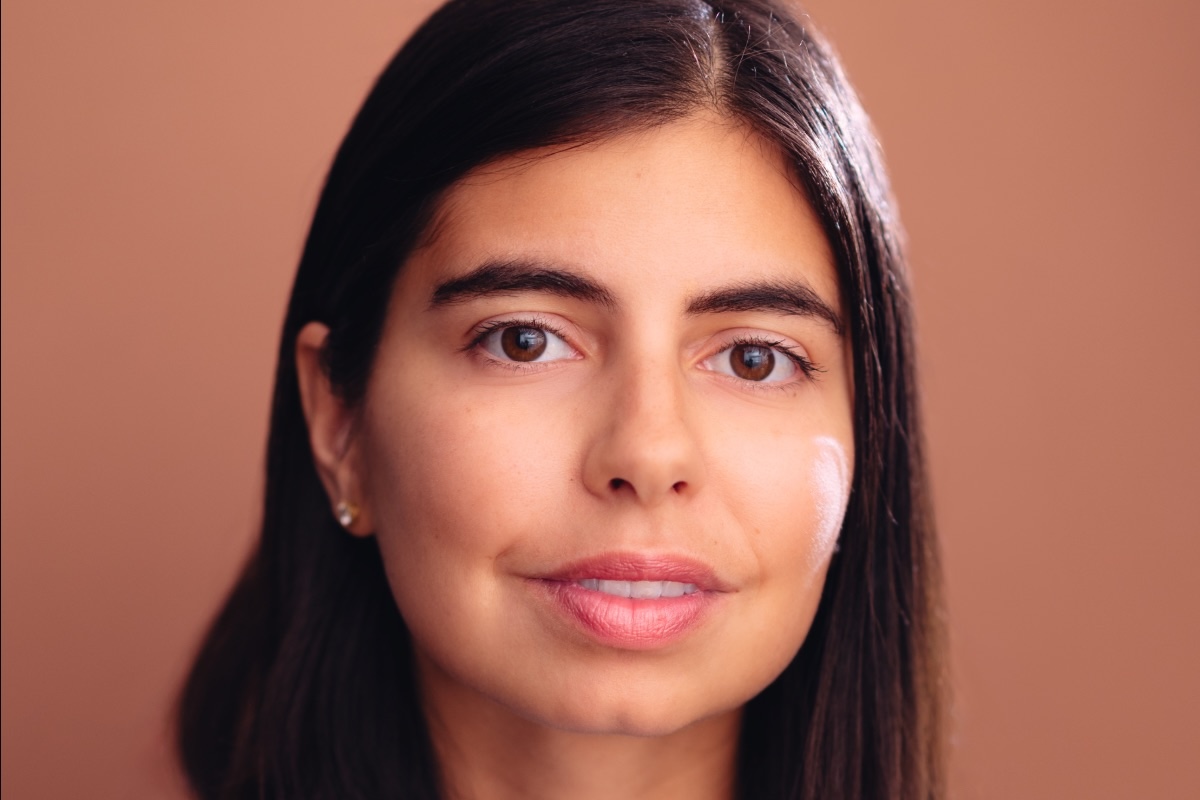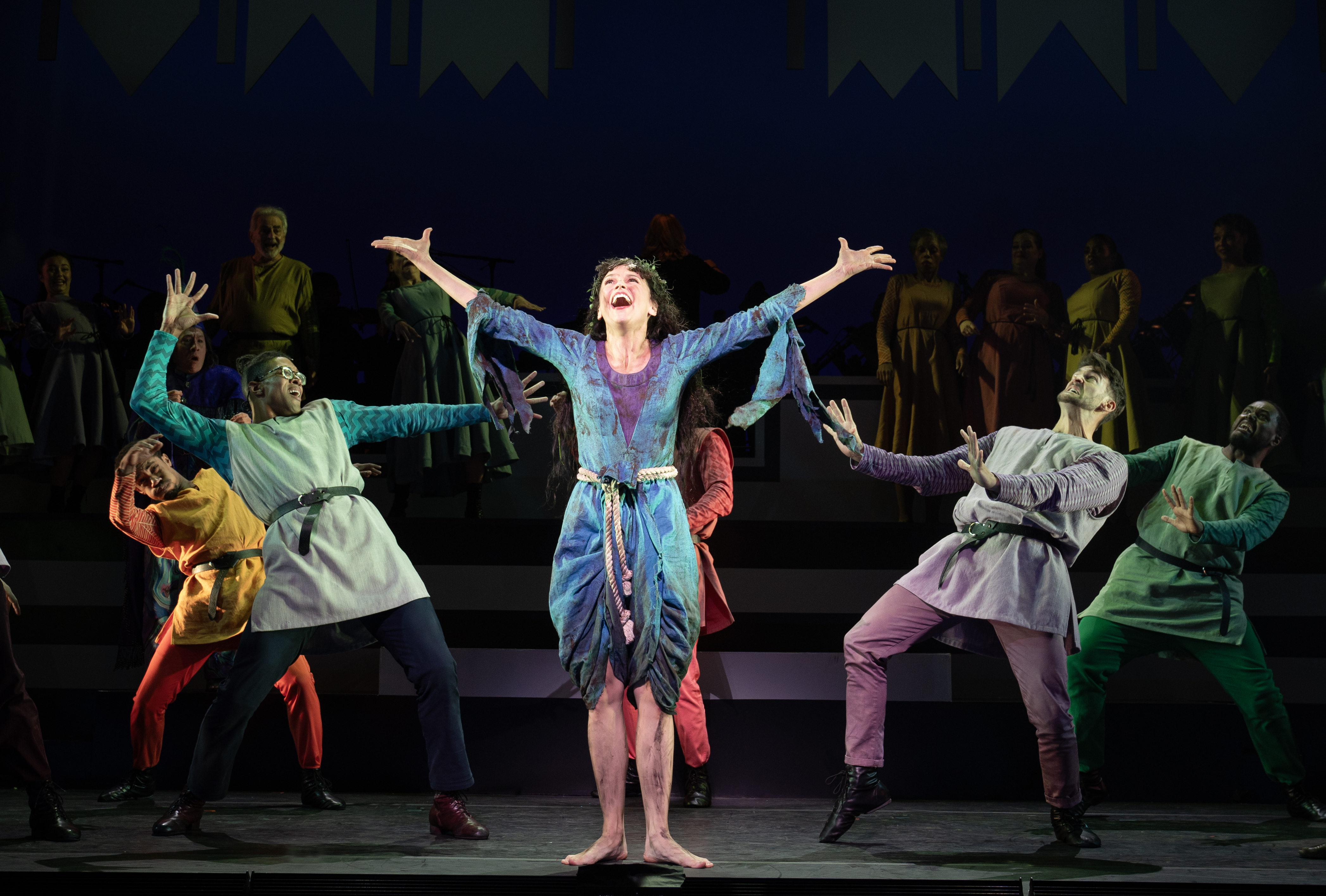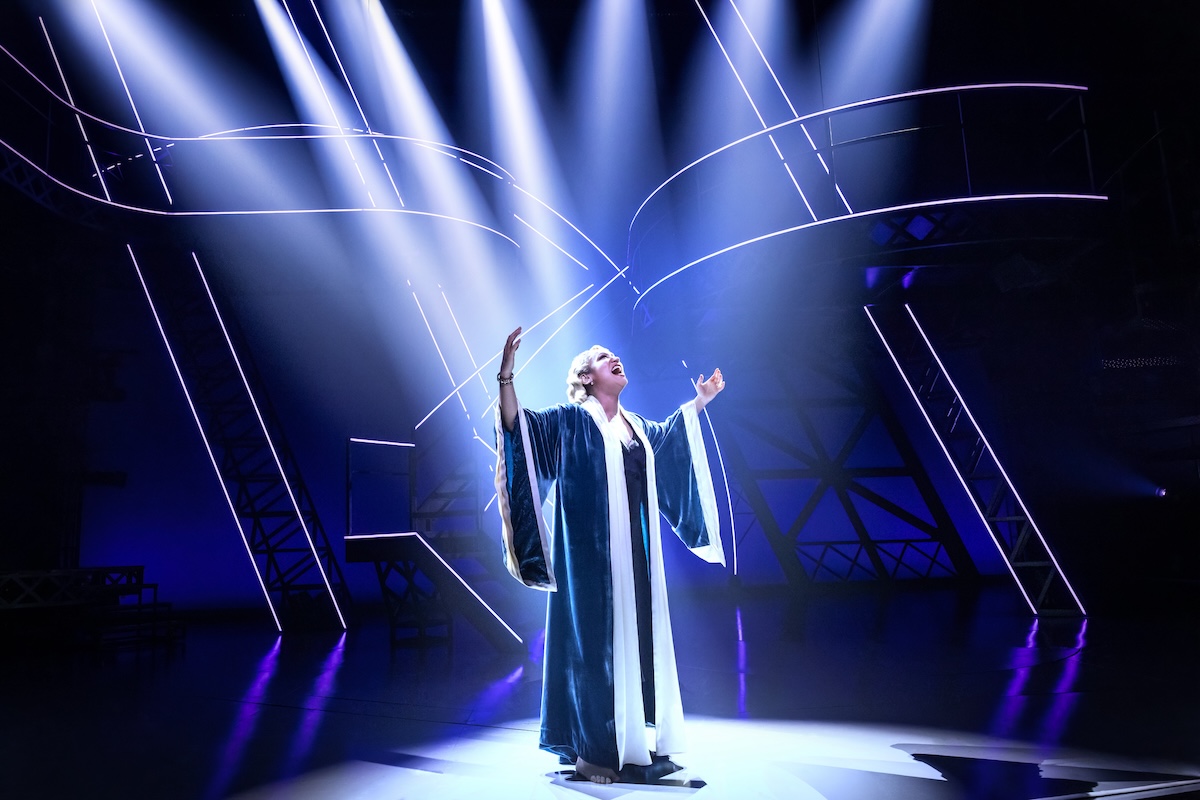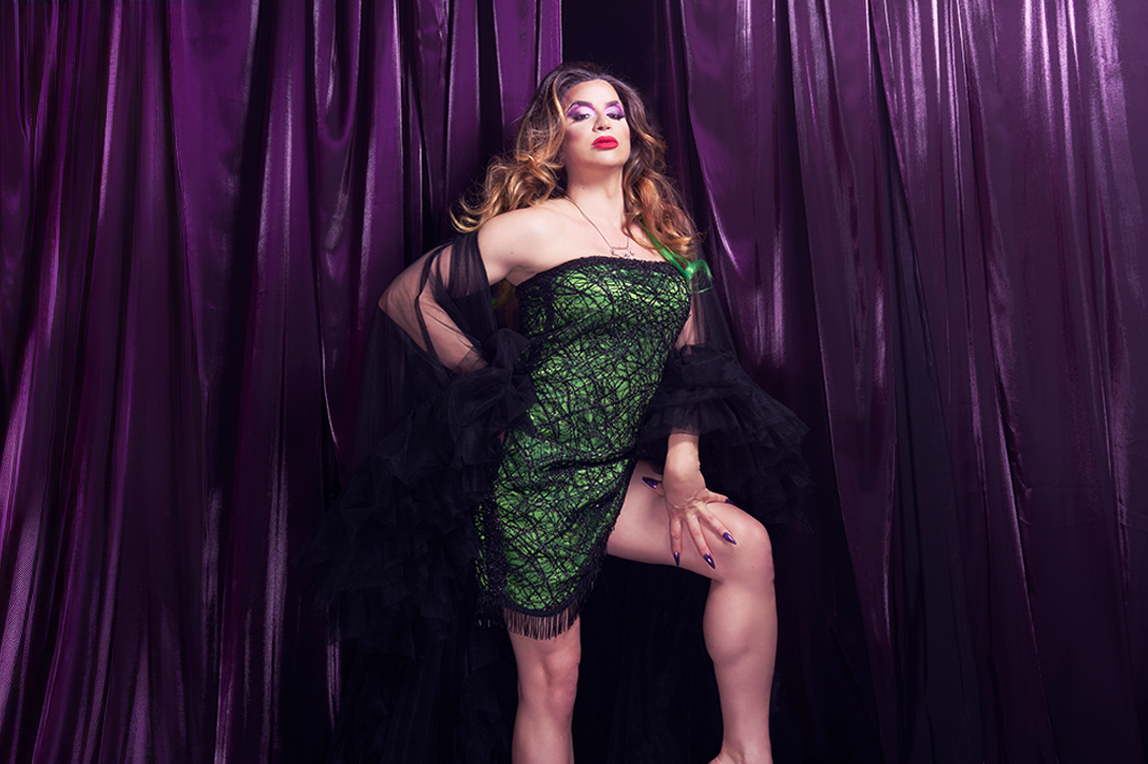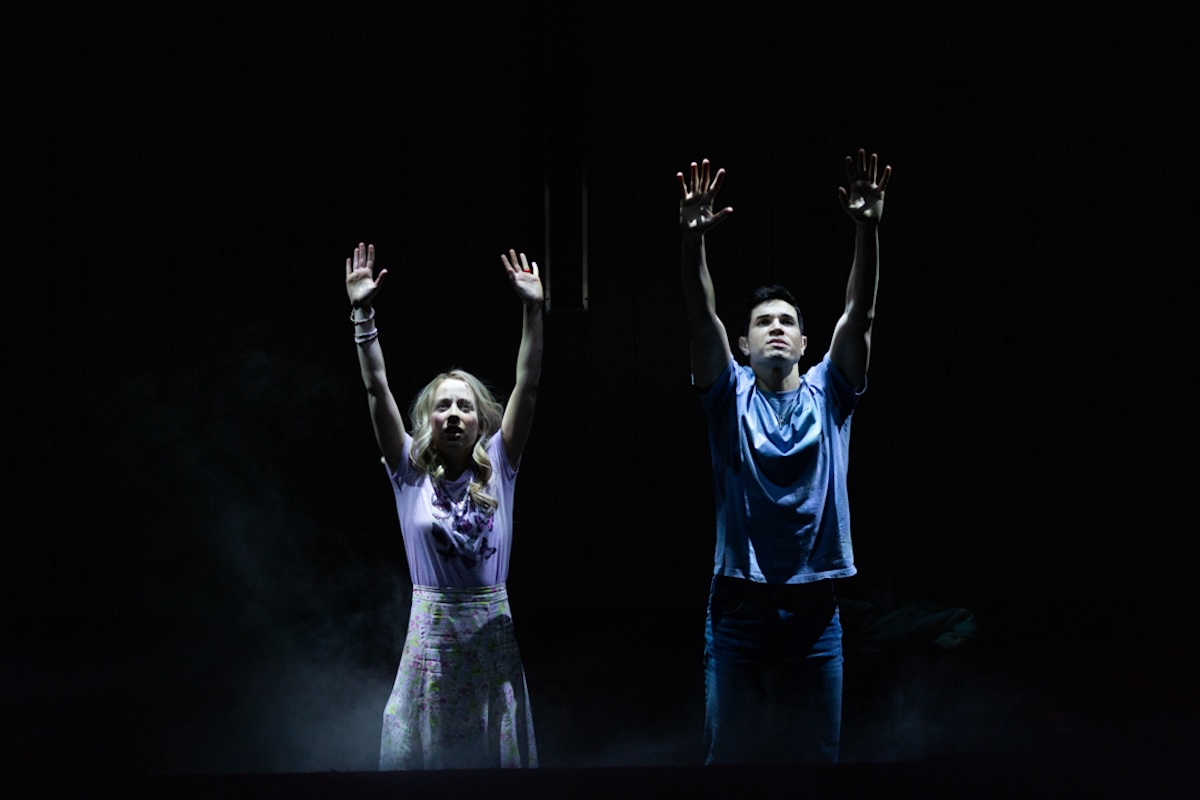Next to Normal

in Next to Normal
(© Craig Schwartz)
Last year’s Pulitzer Prize winner Next to Normal, a mostly sung-through musical drama about a family dealing with the matriarch’s bi-polar disorder, has officially launched its national tour at the Ahmanson Theater, with Tony Award winner Alice Ripley once more offering a riveting, heartbreaking, and brutally honest performance in this odd but highly affecting work of theater.
The Goodman family has long passed the brink of a nervous breakdown. Diana (Ripley) has suffered from depression and delusions for over 16 years and the strain has taken its toll on her husband Dan (Asa Somers) and teenage daughter Natalie (Emma Hunton). Hoping to return to normal, she uses drugs, therapy and even electric shocks to rid her pain. Dan, always comforting, only aggravates Diana more, his understanding stripping away her respect for him.
Meanwhile, Natalie sinks into her own medicated haze to maintain, and repeats history by finding a boyfriend, Henry (Preston Sadler), who is as much an enabler as her dad. And there’s also the couple’s teenaged son Gabe (Curt Hansen), who has his own part in the family drama.
Instead of alienating the audience, by tackling such troubling subject matter as suicide, librettist Brian Yorkey creates a family with which one immediately sympathizes. He not only details their frustrations but focuses on their perseverance. Modern medicine is impotent to help Diana, and many audience members will relate to the idea of doctors’ double-talk and unscientific dispensing of anti-this and anti-that, with no idea if the cure is worth the many side-effects. The rock-infused score, by Yorkey and Tom Kitt, is passionate and rousing. Unlike typical scores of definable songs strung together, the show seems to be one flowing conversation set to music, and the words have unusual electricity.
Ripley is a force of nature, manically switching from euphoria to agony. Her singing voice sounds somewhat spent — mostly muffled from the back of her throat, with some words incomprehensible — but she uses that to intensify Diana’s pain. Somers has the show’s most difficult role as a husband who seems both soggy and omni-patient, yet he makes you believe this man loves his wife so intently that he’ll suffer anything just to stay with her.
Hunton is flippantly sarcastic and brimming to erupt, yet it’s easy to see her feeling of being neglected and why her character’s boyfriend wants so much to coddle her. Sadleir has a charming presence as Henry; he’s sweet and dopey, overflowing with kindness.
Catching Ripley’s voltage but with a multi-octave range that turns every song into an applause-baiter, Hansen steals the show as the enigmatic son Gabe. He is hypnotic and commanding in his anthem “I’m Alive,” and cruelly mocks his sister’s pain, joining in on what should be her solo number, “Superboy and the Invisible Girl,” once again stealing her thunder.
Director Michael Greif brilliantly uses visuals as metaphors for the split-apart family. Even the orchestra is compartmentalized in different rooms, never allowed to function as a unit. The harsh backlights (bright blues and pinks and reds) and white bulbs tell of a family enraged, while the symbolic eyes (that see what shouldn’t be there) and attic windows (that hide the revelations that could unlock the guilt) slide in and out through the evening. Indeed, if no one had entered the stage and said a word, this cold, modern set could have told the entire story all by itself.



